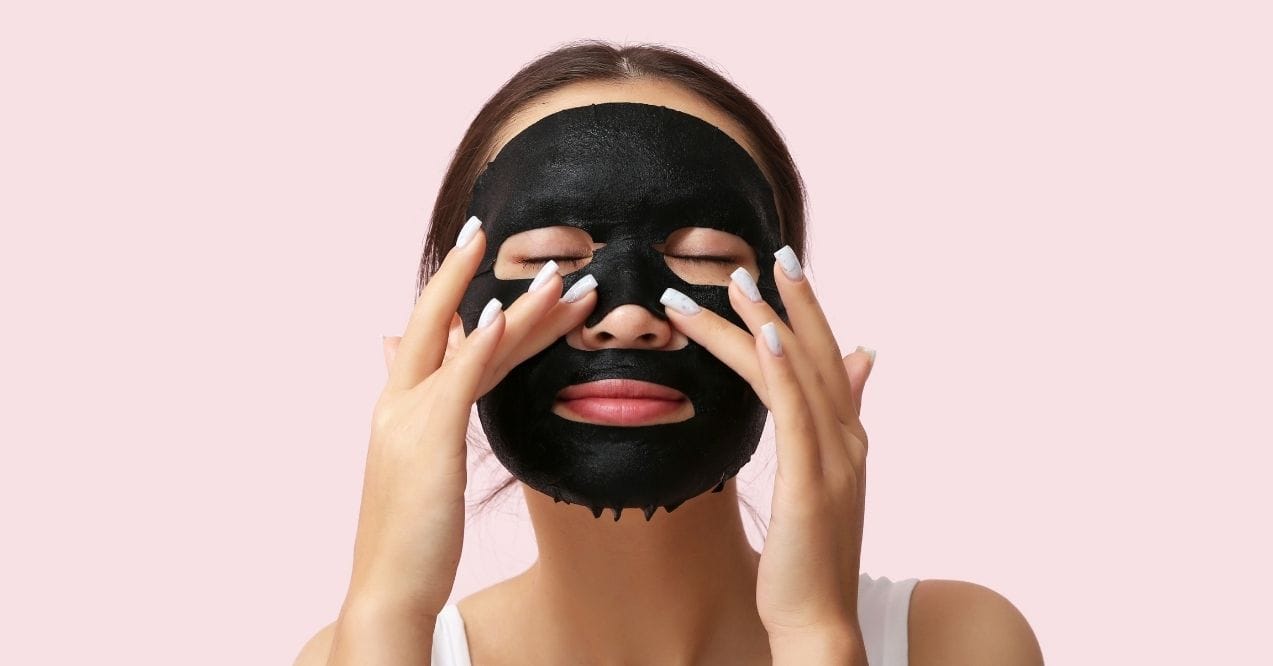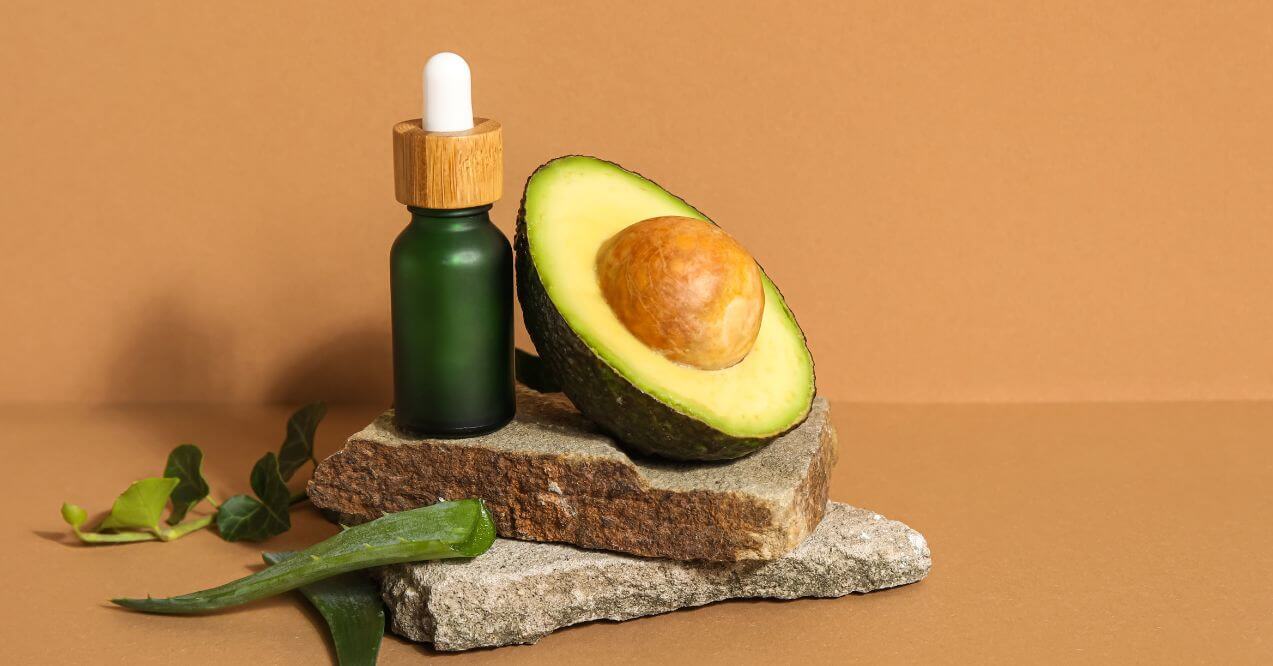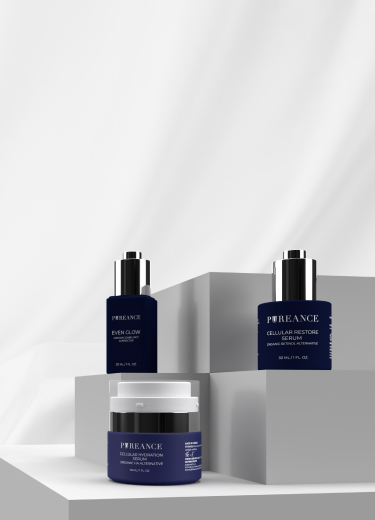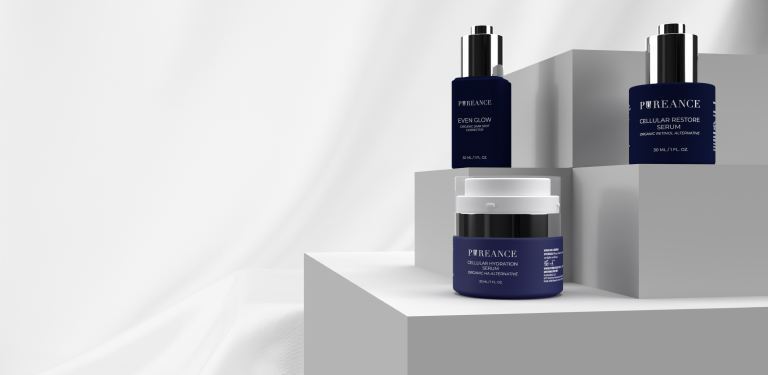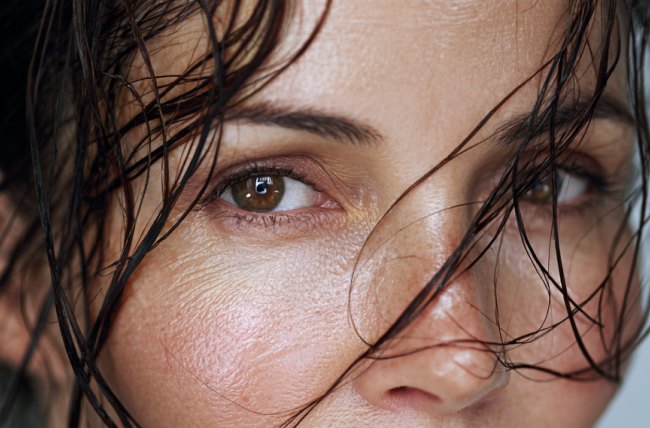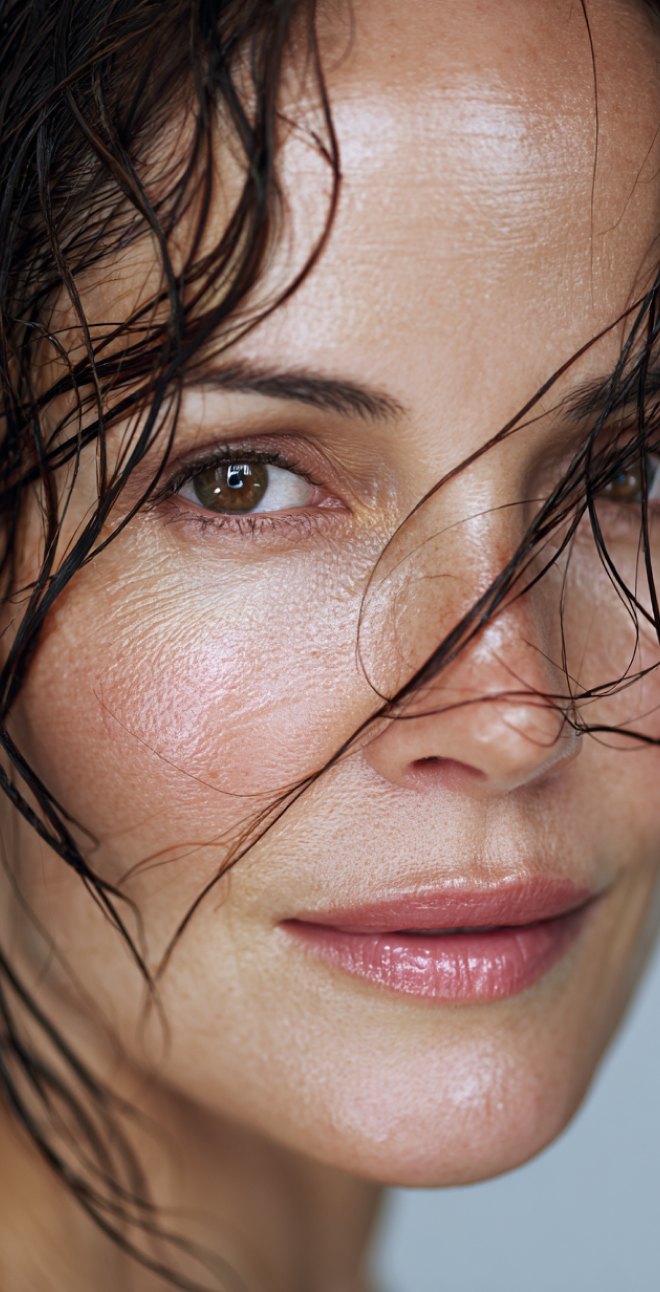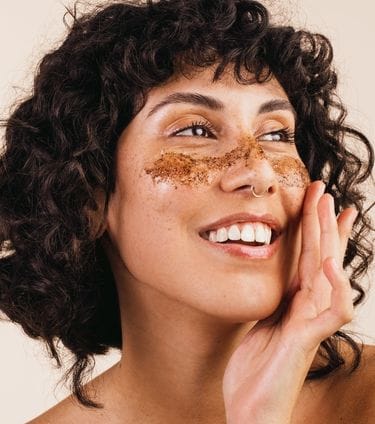


How to Exfoliate Your Face Safely
How to exfoliate face properly is a game-changer for your skincare routine. This simple yet powerful step gets rid of dead skin cells, making your skin look brighter and feel smoother. But doing it wrong can harm your skin’s natural barrier. Many women overdo it, thinking more is better – but that’s not the case!
This guide will show you how to choose the right exfoliation method for your unique skin type, how often to exfoliate face without causing irritation, and the best techniques to keep your skin glowing and healthy. By the end, you’ll have all the know-how to enjoy the benefits of exfoliating face without any downsides.
Key Article Findings
- Match your exfoliation method to your skin type – dry, oily, or sensitive skin need different approaches.
- Physical exfoliants work through scrubbing action, while chemical options dissolve dead skin cells.
- Most skin types should exfoliate 1-3 times weekly – more isn’t always better.
- Always follow exfoliation with moisturizer and sunscreen to protect your newly revealed skin.
Benefits of Exfoliating Your Face
Exfoliating your face does wonders for your skin when done right. This simple step in your skincare routine offers multiple benefits that go beyond just cleansing. Here’s why you might want to make it a regular part of your regimen.
Smooth and Radiant Skin
Regular exfoliation sloughs away the dull, dead skin cells that sit on your skin’s surface. When these cells build up, they can make your complexion look tired and lackluster. By gently removing this layer, you may reveal the fresher, brighter skin underneath.
Unclogs Pores and Prevents Acne
Dead skin cells, oil, and dirt can collect in your pores, leading to blockages that may cause breakouts. Regular exfoliation helps clear away these potential pore-cloggers before they become a problem. For those with acne-prone skin, this gentle removal of debris can make a noticeable difference in keeping blackheads and whiteheads at bay.
Looking for more insight? Learn about what causes clogged pores in our detailed guide.
Boosts Skincare Product Absorption
Think of exfoliation as clearing a path for your other skincare products. When dead skin cells pile up, they can create a barrier that makes it harder for your serums and moisturizers to penetrate.
By removing this obstacle, your expensive skincare products may work more effectively. Your skin might absorb ingredients better, potentially giving you more value from everything else in your routine.
Promotes Skin Cell Turnover
Your skin naturally sheds dead cells, but this process slows as we age. Exfoliation can help speed things up, supporting your skin’s renewal cycle.
This faster turnover may help fade dark spots over time and potentially smooth uneven skin tone. The fresh cells that come to the surface typically look healthier and more vibrant than the old ones, giving your face a naturally refreshed appearance.
For more tips on skin texture improvement, check out our guide on how to improve skin texture.
Reduces Hyperpigmentation and Fine Lines
Regular, gentle exfoliation may help fade areas of darker skin by removing the top layer of pigmented cells. This process can gradually even out your skin tone over time. Similarly, by stimulating cell renewal, exfoliation may soften the appearance of fine lines. Many women notice their skin looks more uniform in color and texture after adding this step to their routine.
Choosing the Right Exfoliation Method
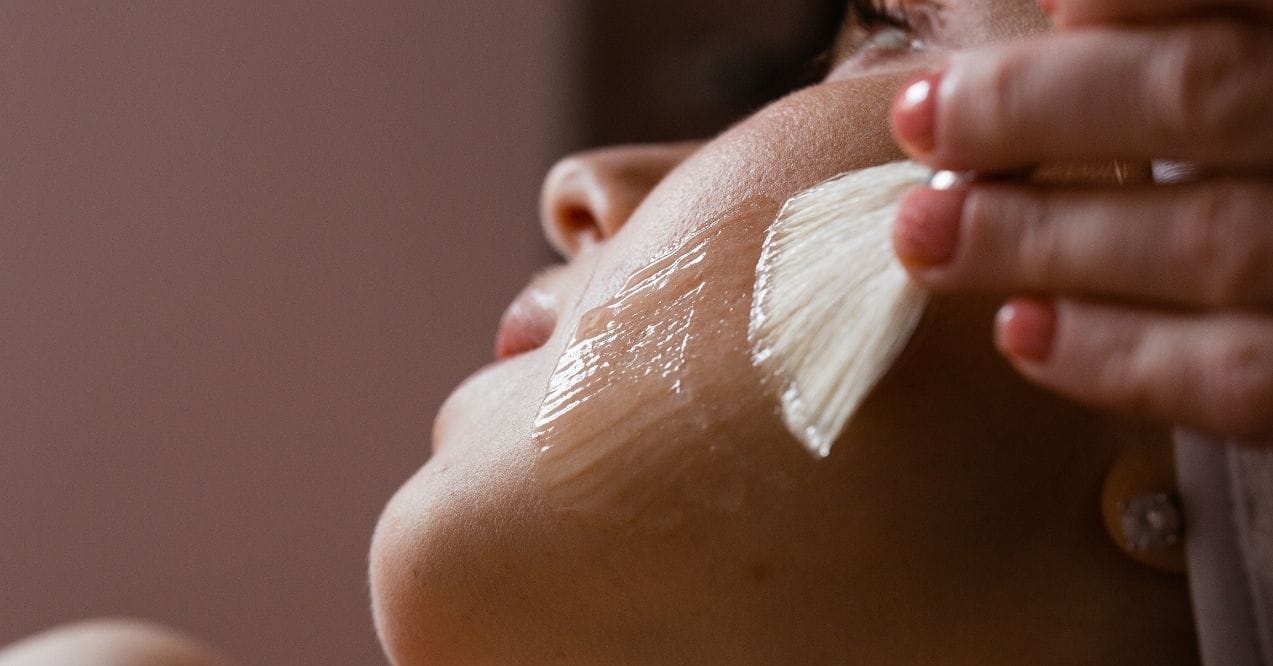
Finding the perfect exfoliation method for your skin can feel like dating – you need to find the right match for a happy relationship. There are two main types to consider: physical and chemical exfoliation. Each works differently and suits various skin types and concerns.
Physical Exfoliation
Physical exfoliants work through good old friction – tiny granules, brushes, or sponges physically scrub away dead skin cells. These might include sugar scrubs, facial brushes, or microfiber cloths. They’re typically straightforward to use and give immediate results you can feel.
Physical exfoliants work well for normal to oily skin types that need a deeper clean. If you choose this method, look for products with smooth, round particles rather than sharp, irregular ones that might create tiny tears in your skin.
Chemical Exfoliation
Chemical exfoliants use acids or enzymes to dissolve the bonds between dead skin cells, allowing them to shed naturally. AHAs (like glycolic and lactic acid) work on the skin’s surface and are great for dry skin. BHAs (like salicylic acid) penetrate deeper into pores, making them ideal for oily or acne-prone skin.
These products typically come as toners, serums, or pads. Chemical exfoliants often work more gently and evenly than physical ones, making them suitable for most skin types – even sensitive skin when used in lower concentrations.
How Often Should You Exfoliate Your Face?
When should you exfoliate? It’s a common question with no one-size-fits-all answer. Your skin type plays a big role in determining how many times to exfoliate face without causing irritation. Let’s break it down by skin type to help you find your perfect frequency.
Oily Skin
If you have oily skin, you can typically exfoliate more frequently than other skin types. Aim for 2-3 times per week using products with salicylic acid (BHA). This ingredient works beneath the skin’s surface to clear out excess oil from pores. The oil-cutting power of BHAs makes them perfect for controlling shine and helping prevent breakouts, which oily skin types often struggle with.
Dry Skin
For dry skin, less is definitely more when it comes to exfoliation. Once a week is usually plenty, using gentle products with AHAs like glycolic or lactic acid. These ingredients not only remove dead skin cells but also attract moisture to the skin. Over-exfoliating dry skin can strip away natural oils and make dryness worse, so pay attention to how your skin responds and adjust accordingly.
Sensitive Skin
If you’re wondering how to exfoliate sensitive face safely, start with the gentlest approach possible. Once every 7-10 days is typically enough, using products specifically formulated for sensitive skin.
Low concentrations of lactic acid (under 5%) or very mild physical exfoliants like a konjac sponge are good options. If redness or irritation occurs, take a break and focus on how to repair skin barrier naturally before trying again.
How to Exfoliate Your Face Safely

Learning how to exfoliate your face properly makes all the difference between glowing skin and irritated skin. These guidelines will help ensure you’re getting the benefits without the potential downsides of this powerful skincare step.
Be Gentle
No matter what exfoliation method you choose, gentleness is key. When using scrubs, apply with light pressure in small, circular motions—no need to scrub like you’re cleaning a dirty floor! With chemical exfoliants, pat gently onto skin rather than rubbing. Let the product do the work, not your fingers.
Avoid Over-Exfoliating
Too much of a good thing can quickly turn bad when it comes to exfoliation. Watch for signs that you’re overdoing it: unusual redness, flaking, tight feeling, or increased sensitivity. If these appear, it’s time to take a step back. Reduce how much you exfoliate face or take a break altogether until your skin calms down. Your skin barrier needs time to recover between sessions.
Follow with Moisturizer
After exfoliating, your skin needs extra hydration and protection. Always apply a nourishing moisturizer to restore your skin’s moisture balance. Products with ingredients like ceramides, hyaluronic acid, or squalane work well to replenish the skin after exfoliation. For comprehensive guidance on moisturizing techniques, check out our guide on how to moisturize your face effectively.
Natural Exfoliation Methods
If you prefer to keep things simple and natural, your kitchen might already contain everything you need to exfoliate effectively. How to exfoliate face naturally is all about working with gentle ingredients that your skin will love. Here are some options based on your skin type.
For Dry Skin
Oatmeal makes an excellent gentle exfoliant for dry, flaky skin. Mix a tablespoon of finely ground oats with a teaspoon of honey and a splash of warm water. The oats gently buff away dead skin while the honey adds moisture. Massage onto damp skin for 30 seconds, then rinse. This soothing combo helps remove flaky patches without stripping away the oils your dry skin needs.
For Oily Skin
For skin that produces excess oil, try mixing a teaspoon of raw honey with two teaspoons of sugar. The natural antibacterial properties of honey help manage bacteria that can lead to breakouts, while sugar provides gentle physical exfoliation. Apply to damp skin in circular motions, focusing on the T-zone where oil tends to collect, then rinse thoroughly with lukewarm water.
For Sensitive Skin
Fresh papaya contains natural enzymes that dissolve dead skin cells without any scrubbing action. Simply mash a quarter cup of ripe papaya and apply it as a mask for 5-10 minutes. The enzymes work gently to brighten skin while the fruit’s vitamins nourish. It’s perfect for those with sensitive skin who find traditional exfoliants too harsh or irritating.
Post-Exfoliation Care
What you do after exfoliating is just as important as the exfoliation itself. Your skin is more vulnerable after you’ve removed that top layer of dead cells, so it needs extra attention. These steps will help protect and nourish your freshly exfoliated skin.
Sunscreen
After exfoliating, your skin is more susceptible to UV damage because you’ve removed some of its natural protection. Always apply a broad-spectrum sunscreen with at least SPF 30 before going outside, even on cloudy days. The fresh skin cells you’ve just revealed are particularly vulnerable to sun damage, which can lead to dark spots and faster aging – exactly what you’re trying to avoid with your skincare routine.
Hydration
Drinking water is great, but your skin needs direct hydration too after exfoliation. Apply a moisturizer that suits your skin type within minutes of exfoliating while your skin is still slightly damp. Look for products containing soothing ingredients like aloe vera, hyaluronic acid, or ceramides. These help lock in moisture and support your skin’s natural barrier as it recovers from the exfoliation process.
Conclusion
How to exfoliate your face safely isn’t rocket science, but it does require some know-how and patience to get right. By matching your exfoliation method to your skin type, using gentle techniques, and paying attention to how often to exfoliate face for your specific needs, you’ll get the glowing results you want without irritation.
Add proper post-exfoliation care like sunscreen and good moisturizing, and you’re setting yourself up for smoother, brighter skin. Start slowly, listen to what your skin tells you, and adjust as needed. Your face will thank you with that healthy glow everyone notices.
It depends on your skin type. Oily skin can handle 2-3 times weekly, dry skin about once weekly, and sensitive skin only every 7-10 days. Always adjust based on how your skin responds.
Yes, regular exfoliation may help with acne by removing dead skin cells and debris that clog pores. BHA exfoliants like salicylic acid are particularly helpful for acne-prone skin.
Watch for increased redness, irritation, flaking, unusual shininess, tightness, or new sensitivity to products. If you notice these signs, reduce frequency and focus on skin barrier repair.
Daily exfoliation is too harsh for most skin types. Even oily skin typically needs rest days between exfoliation sessions to maintain a healthy skin barrier.
Yes, but choose very gentle methods like low-percentage lactic acid or a soft konjac sponge, and limit exfoliation to once every 7-10 days. Stop if irritation occurs.
This site offers health, wellness, fitness and nutritional information and is designed for educational purposes only. You should not rely on this information as a substitute for, nor does it replace, professional medical advice, diagnosis, or treatment. If you have any concerns or questions about your health, you should always consult with a physician or other health-care professional. Do not disregard, avoid or delay obtaining medical or health related advice from your health-care professional because of something you may have read on this site. The use of any information provided on this site is solely at your own risk.
Nothing stated or posted on this site or available through any services are intended to be, and must not be taken to be, the practice of medical or counseling care. For purposes of this agreement, the practice of medicine and counseling includes, without limitation, psychiatry, psychology, psychotherapy, or providing health care treatment, instructions, diagnosis, prognosis or advice.
